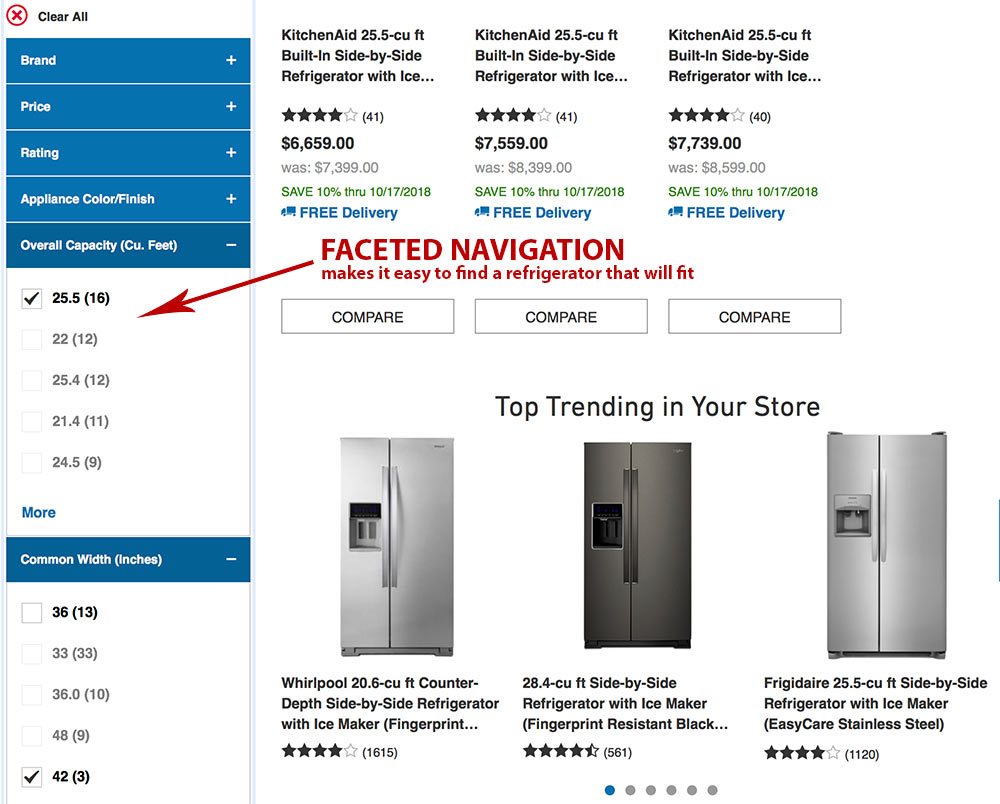What is Faceted Navigation?
Faceted navigation is a type of website user interface that allows users to quickly sort and narrow down many results to the specific items they are looking for. Faceted navigation is great for user experience and rankings when properly configured. Still, it can pose SEO issues if not executed correctly.
Here’s an example of faceted navigation on an e-commerce website:

Where is Faceted Navigation Used?
Faceted navigation is commonly found on sites with large amounts of data to sort. You’ll almost always see it on:
- Ecommerce websites
- Job portals
- Travel websites
- Stock photography sites
- Image boards such as Pinterest
- Large content sites such as recipe sites
Pros and Cons of Faceted Navigation
Pros of Faceted Navigation
The main advantage of faceted navigation is that it provides excellent user experience by letting users quickly sort data and easily find what they’re looking for based on multiple criteria.
Cons of Faceted Navigation
When incorrectly configured, faceted navigation can create a host of SEO-related issues. Some common issues that you might face are:
- Wasting your crawl budget.
- Possible duplicate content issues.
- Increased risk of keyword cannibalization.
This means that, unlike breadcrumb navigation, for example, faceted navigation requires special attention in terms of crawling and indexing by search engines.
How to Optimize Faceted Navigation for SEO
-
Control Indexation: Use
noindextags to prevent search engines from indexing faceted URLs that don’t add unique value. This helps to avoid duplicate content issues. -
Use Canonical Tags: Implement canonical tags to indicate the preferred version of a page. This helps consolidate link equity and avoid duplicate content penalties.
-
Adjust Crawl Budget: Use robots.txt to block search engines from crawling unnecessary faceted navigation paths. This ensures that your crawl budget is spent on valuable content.
-
Parameter Handling: Use tools like Google Search Console to set preferred URL parameters. This helps search engines understand which parameters to index and which to ignore.
-
Internal Linking: Ensure that important faceted pages are linked from other parts of your website to pass link equity and enhance their discoverability.
For more detailed strategies on optimizing faceted navigation for SEO, you can explore resources on Ranktracker Blog and our SEO Glossary.
